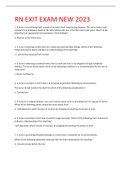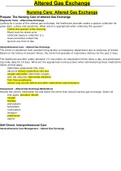Chapter 1: Introduction to the Human Life Span
1.1 How Should We Think about Development?
LEARNING OBJECTIVES:
Define development, aging, and their relationship to each other.
Explain and illustrate the role played by age grades, age norms, and the social clock
in making human development different in different historical, cultural, and
subcultural contexts.
Summarize the extreme positions one can take on the “nature-nurture” issue and the
position most developmental scientists today take.
Defining Development
Development can be defined as systematic changes and continuities in the individual that
occur between conception and death (“womb to tomb”).
Systematic - we imply that they are orderly, patterned and relatively enduring – not
fleeting and unpredictable.
Development also involves continuities; ways we remain the same or continue to
reflect our past selves.
Systematic changes and continuities of interest to students of human development fall into
three broad domains:
1. Physical Development. The growth of the body and its organs, functioning of
physiological systems including the brain, physical signs of aging, changes in motor
abilities, etc.
2. Cognitive Development. Changes and continuities in perception, language, learning,
memory, problem solving, and other mental processes.
3. Psychological Development. Changes and carryover in personal and interpersonal
aspects of development, such as motives, emotions, personality traits, interpersonal
skills and relationships, and roles played in the family and in the larger society.
Developmentalists often specialize in one of these three aspects of development, but
appreciate that humans are whole beings and that changes in one area affect the others.
Growth: has been defined by biologists as the physical changes that occur from conception
to maturity.
,Biological Aging: the deterioration of organisms (including humans) that leads inevitably to
their death.
Development, biologically, involves growth, stability, gains, losses, neutral changes,
aging, and continuities in each phase of the life span, and aging is part of it.
Aging: as developmental scientists define it, involves more than biological aging, it refers to
a range of physical, cognitive, and psychological changes, positive and negative, in the
mature organism.
Conceptualizing the Life Span
If you were to divide the human life span into periods, how would you do it?
Table 1.1 lists the periods that many of today’s Developmentalists regard as distinct.
Emerging Adulthood: a transitional period between adolescence and full-fledged adulthood
that extends from about age 18 to age 25 (maybe as late as 29).
After WWII, jobs become more complex and required more education, so more
adolescents began to attend college in large numbers to prepare for work and
postponed marriage and parenthood in the process. As a result, psychologist Jeffrey
Arnett and others began to describe emerging adulthood as a distinct phase of the
life span in which college-aged youth spend years getting educated and saving money
in order to launch their adult lives.
Emerging adulthood is a distinct developmental period primarily in developed countries, but
is spreading to developing ones.
Cultural Differences
Culture: often defined as the shared understandings and way of life of a people.
, Includes beliefs, values, and practices concerning the nature of humans in different
phases of the life span.
Different cultures can lead us along different developmental pathways.
Each society has its own way of defining growth, maturity, and aging. Most common ways of
conceptualizing the time span:
Age Grade: socially defined age group in a society (table 1.1) is assigned different
statuses, roles, privileges, and responsibilities.
Rite of Passage: a ritual that marks a person’s “passage” from one status (phase of
life) to another, usually in reference to the transition from childhood to adulthood.
o Rites of passage can involve varied practices such as body painting,
circumcision, beatings, instruction by elders in adult sexual practices, tests of
physical prowess, and gala celebrations (Schlegel & Barry, 2015)
Age Norms: expectations that come with every age group. It is society’s way of telling
people how to act their age. E.g. drinking a beer at the age of 6 defies social norms.
Social Clock: a persons’ sense of when things should be done and when he or she is
ahead or behind of the schedule dictated by age norms.
Why are age norms important?
1. They influence people’s decisions about how to lead their lives. They are basis for
Neugarten’s (1968) social clock
2. Age norms affect how easily people adjust to life transitions. E.g. normal life events
such as having children tend to affect us more negatively when they occur “off time”
than when they occur “on time”.
a. However, Neugarten could see even in the 60s that age norms in our society
have been weakening for some time. Its less clear what one should be doing
at what age.
Subcultural Differences
Age grades, age norms, and social clocks differ not only from culture to culture but also from
subculture to subculture.
Ethnicity: people’s affiliation with a group based on common heritage or traditions.
Socioeconomic Status (SES): standing in society based on such indicators as occupational
prestige, education, and income.




